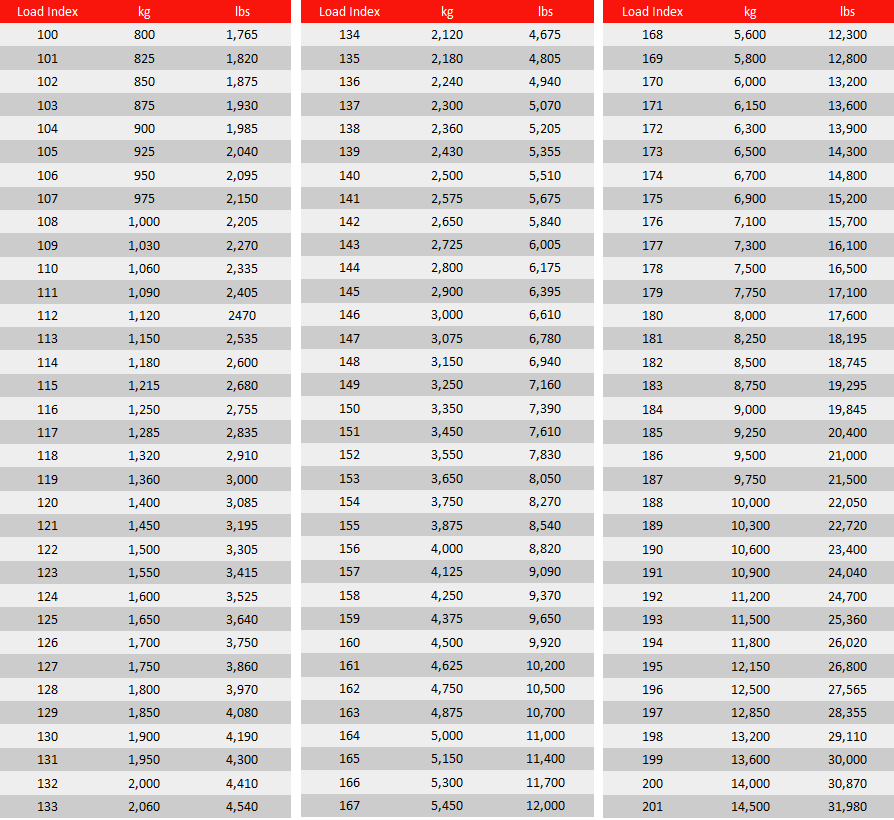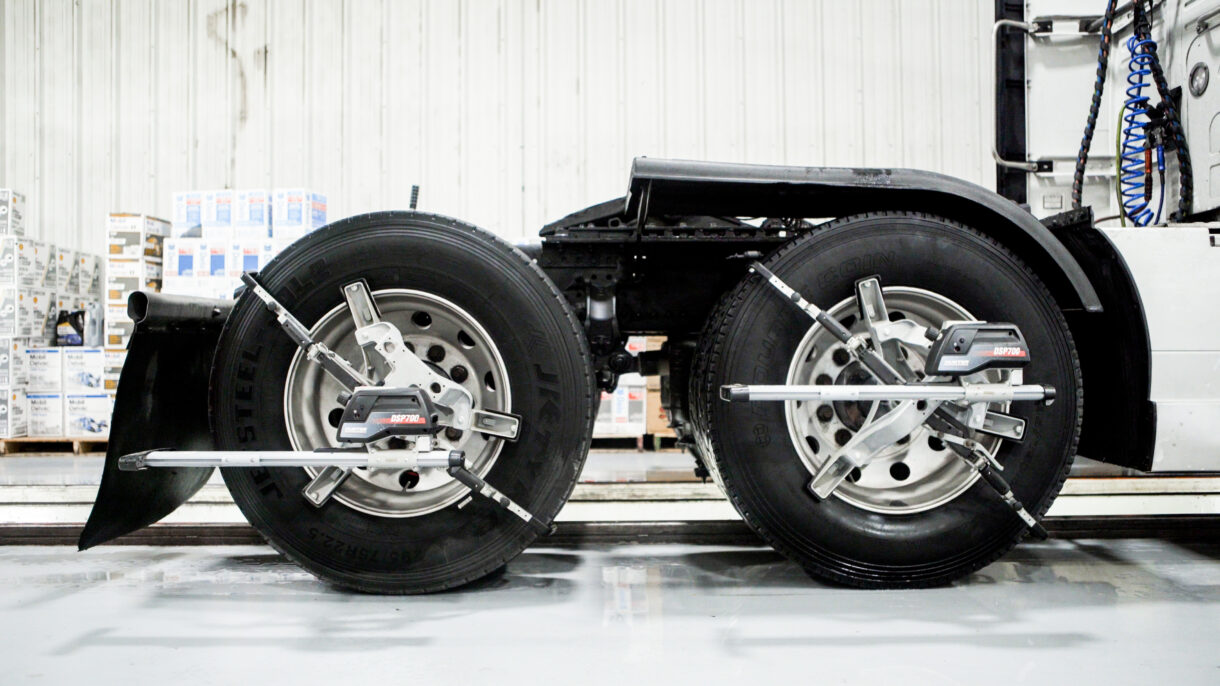
How Long Does an Oil Change Take for Semi-Trucks?
May 5, 2025
Are High-End Semi-Trucks Worth the Investment? Cost, Features, and Benefits Explained
May 12, 2025Understanding tire specifications and semi-truck tire ratings can help you maximize your mileage. When choosing truck tires for a rig, each driver and load has a unique set of needs. Knowing how to best evaluate these needs to select the best tires for your truck has many benefits. From increased fuel efficiency to a smoother drive, better control of your vehicle, and financial savings on tire replacements, it’s easy to see why keeping up with tire maintenance tips and ratings is such an essential part of driving.
Semi-truck tire ratings include size, load capacity, speed rating, and tread wear. These ratings are consistent across manufacturers and commercial tire brands, making it easy to understand tire specs when you know what to look for. It’s best to check your truck’s manual for unique specifications that may affect your rig based on driving conditions.
At LubeZone Truck Lube Center, we’re proud to offer drivers across America access to affordable, convenient, and speedy preventative semi-truck maintenance. We’re home to the famous 40-minute oil change, with no appointment necessary. At LubeZone, we care about getting drivers back on the road as quickly as possible in top working condition so that you can meet your route deadlines and complete the job safely.
Each of our truck lube centers offers FREE tire checks with every service. We’ll gauge your PSI to ensure proper fill and help you avoid blowouts. Additionally, tire alignment service is now available at most locations. You can check tire tread and wear at each step, inspecting for any early signs of damage to prevent accidents before they happen. Visit LubeZone Truck Lube Center along your next route for quick, professional service.
Keep reading to learn more about semi-truck tire ratings and get hot tire maintenance tips from the pros at LubeZone.
The Essential Guide to Understanding Tire Ratings
Semi-truck tire ratings contain a set of information that allows you to determine several key factors. Ratings are based on the possible load index, maximum tire speed, and tire ply. Additionally, when understanding tire specs, it’s crucial to note the proper inflation pressure. Choosing the right semi-truck tire rating for your wheels will determine the following:
- How much weight your truck can safely carry.
- How fast your vehicle can safely drive.
- How durable the tires are.
When selecting tires, choosing the proper rating for your needs enables you to drive safely and efficiently. These key factors play a crucial role in fuel efficiency, truck control, and other aspects.
How to Read a Tire Code
In order to be able to understand how to read a tire code, first, you’ll need to learn what each portion of the code represents. We will break down an example of the following code: 315/80R22.5 156/150L
- First 3 Digits: 315 indicates the width of the tire in millimeters.
- The “/”: Simply separates the digits.
- Number 80: Tells the height of the tire expressed as a percentage of the width.
- The Letter “R”: Indicates that it is a Radial tire, which is almost always used in modern trucks.
- 22.5: Describes the tire size in inches.
- Numbers 156/150: Represent the load index of the tire.
- The letter “L”: Identifies the speed index of the tire. Each letter corresponds to a universal rating system.
Load Index and Speed Ratings Explained
A tire’s load index tells you how much weight your truck can safely carry. This is particularly important for drivers who transport heavy materials. Each tire manufacturer’s manual or chart will note its load index. This will always appear as a numeric value on the tire’s sidewall.
This number indicates the maximum weight a tire can safely carry when inflated to its recommended PSI. Higher load indexes are capable of carrying more weight. For commercial trucks, this value typically ranges from 120 to 150. You risk tire failure on the road if you choose a tire with a load index that is lower than required.
A load index of 120 allows you to safely haul up to 3,085 lbs per load, while a load index of 140 can safely carry 5,510 lbs.

Source: Tyre Tip
The speed index of a tire indicates the maximum speed at which the tire is designed to operate safely. This value is represented by a letter. Most semi-trucks have a speed index “L,” designating they can safely travel up to 75 mph.
You may require a lower speed rating if you’re carrying a particularly heavy load. This is because heavier loads need more durable tires, which demand a lower speed for safety.

Source: Top Mark Funding
Understanding Tire Specs: Tread Depth and Design
Semi-truck tires are comprised of the tread and the inner liner. The tread is an outer rubber layer that has direct contact with the road. Tire tread provides heat resistance and grip, allowing you to maintain control while driving and steering. The inner liner, located behind the tread, is made from synthetic rubber. It holds air pressure inside, allowing your tire to remain inflated.
The Department of Transportation (DOT) issues regulations regarding the proper tread depth on semi-trucks. For example, steer tires must meet the DOT minimum tread depth of 4/32 of an inch. All other truck tires must have a minimum tread depth of at least 2/32 of an inch.
In addition to helping you gain traction on the road, tire tread also enables trucks to drive safely through water. It does this by guiding the water around the tires, preventing hydroplaning. There are several standard tire tread designs.
When understanding tire specs regarding semi-trucks, you’ll generally see two primary tread designs. One focuses on fuel efficiency, and the other focuses on traction.

Source: BF Good Rich Truck Tires
Steer and trailer tires require a “rib design” in the tread. Here, the grooves run parallel to each other. These treads are great for improved fuel efficiency, though they don’t offer particularly great traction in wet driving conditions.

Source: BF Good Rich Truck Tires
Drive tires usually feature a “block” or “lug” design. Here, the tread grooves are lateral and perpendicular to one another. This type of groove provides greater traction and better fuel mileage.
Maximizing Tire Lifespan Through Proper Maintenance
Once you’ve selected the best tires for your rig, it’s essential to follow proper tire maintenance tips to keep them in optimal shape. Doing so will allow you to maximize the mileage from your tires while achieving the best fuel economy.
Key tire maintenance tips include:
- Check PSI at each stop. LubeZone Truck Lube Center offers FREE tire checks.
- Ensure proper tire alignment. We offer tire alignment services at an additional cost at most locations. You should realign your tires every 6,000 to 8,000 miles.
- Clean your tires regularly.
- Check for hazards such as nails, broken glass, and debris that may become lodged in your tires before every trip.
- Monitor load distribution.
- Practice smooth driving habits.
- Minimize harsh braking and acceleration habits.
- Check tire tread and wear patterns regularly.
- Check for tire cracking.
- Check for tire bulges.
- Look for missing or loose lug nuts.
Reading Tire Wear Patterns
All tires will exhibit wear patterns eventually. These wear patterns tell a story of how you’re driving, the weight of your loads, driving conditions, speed, and load distribution. Irregular tire wear patterns can indicate an issue with either the tires themselves or your load weight and distribution.
What tire wear patterns say about your truck:
- Depression Wear: Presents as a localized bald patch on the tire’s shoulder. Indicates loose wheel bearings, faulty shocks, balance issues, mis-mounted tires, improper PSI, and more.
- Diagonal Wear: Presents as a pattern of oblique patches on the tire’s tread. Indicates misaligned tires or axes, balance issues, improper PSI, and more.
- Brake Skid Wear: Presents as a localized area with excessive tread wear. This can happen as the result of abruptly braking with too much force. When tires skid against the road’s surface, it causes the tread to wear off suddenly.
- Shoulder Step Wear: This presents as the outer rib of the tire wears down, creating a drop-off or step-down pattern. Indicates a wheel misalignment, hard cornering, improper tire rotation, and suspension issues.
- Scalloped Wear: Also called “cupping,” this presents as an irregular cup-like pattern across the tire. Indicates incorrect PSI, improper alignment, suspension issues, and more.
- Toe Wear: Presents as uneven tread wear along the inner and outer edges of the tires. Indicates improper wheel or tire alignment.
The above list is not all-encompassing when it comes to irregular tire tread patterns and wear. Any unexpected or irregular wear on tire treads requires an inspection and correction of issues with your tires, truck, and load. Following these proper tire maintenance tips can prevent such wear from occurring, prolonging the life of your tires and saving you money.
How Tires Affect Semi-Truck Fuel Efficiency
Semi-truck tires play a significant role in improving fuel efficiency. Properly inflated tires with the correct tread design reduce rolling resistance, which means the truck uses less energy to move. When tires are under-inflated or worn down, rolling resistance increases, causing the engine to work harder, which leads to higher fuel consumption.
The type of tire you select and its size also matter. Tires designed for long-haul trips often feature low rolling resistance to enhance fuel economy, which saves you money on gas. Utilizing proper tire maintenance tips, like checking air pressure and replacing worn tires promptly, helps ensure that a truck runs as efficiently as possible. This lowers your total fuel costs over time and improves overall performance.
Many drivers ask us, “How long do semi tires last?” With a proper understanding of tire specs and semi-truck tire ratings, and by utilizing the best tire maintenance tips possible, drivers can get anywhere from three to six years out of their wheels. Most drivers replace their tires every 25,000 miles to 75,000 miles.
Visit LubeZone Truck Lube Center Today
Visit LubeZone Truck Lube Center today for free tire checks and fast, reliable preventative maintenance. Keep your rig running smoothly with expert care. Find a location along your next route and stop by today to drive with confidence.

LubeZone is the fastest growing dedicated semi-truck service in the United States with locations in Texas, California, Oklahoma, North Carolina and Georgia. Our preventative maintenance solutions are designed to get the professional driver back on the road FAST.



